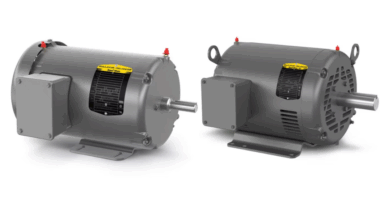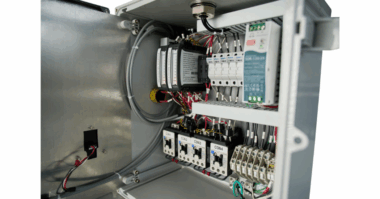As the building services industry prepares for the possibility of LEEDv4, which looks like it will take effect in 2013, we thought it might be helpful to review some of the basics of the current LEED®program.
As most of you know, the acronym stands for Leadership in Energy and Environmental Design and was developed as the Green Building Rating System by the U.S. Green Building Council (USGBC). The model was developed in the late 90’s to encourage environmental awareness among government agencies, architects, engineers, developers, and builders.
While many building services professionals had previously followed environmentally friendly practices, LEED was developed to provide a streamlined set of building standards. To encourage environmental building practices, the government worked to model sustainable green buildings on many of its state buildings. So in order to increase the number of new and redeveloped buildings eligible for LEED certification, the government began offering many incentives within the building industry including grant funding and tax breaks based on the level of LEED certification attained.
The point-based system administered by the U.S. Green Building Council, awards points for meeting the specific requirements of credits in each of its categories. LEED points are awarded on a 100-point scale, and credits are weighted to reflect their potential environmental impact. Additionally, bonus credits are available for addressing innovation in design and regionally specific environmental issues. The LEED categories are:
- Sustainable Sites
- Water Efficiency
- Energy & Atmosphere
- Material & Resources
- Indoor Environmental Quality
- Innovation & Design Process
An important feature of LEED is that certification can be attained on four different levels, which are determined by the 100-point scale. The levels of LEED certification are Certified, Silver, Gold, and Platinum. A building or project can attain LEED certification by submitting an application that documents compliance with the requirements set forth in the LEED rating system. The Green Building Council issues LEED certification upon satisfactory application, review and compliance verification. There are fees associated with LEED certification.
LEED certification provides independent, third-party verification that a building, home or community was designed and built using strategies aimed at achieving high performance in key areas of human and environmental health: sustainable site development, water savings, energy efficiency, materials selection and indoor environmental quality.
Since its introduction, the LEED green-building rating system has undergone many changes and more are in store as LEEDv4 will be introduced in 2013. The changes are currently being reviewed by industry leaders and will be voted on later this year and into 2013.
The delay of LEEDv4 came in response to a growing outcry from architects and other building industry professionals—including many who have been core supporters of LEED since its inception—who had three major concerns:
- The proposed changes in the rating system were too much, too fast, especially in a weak real estate market.
- Some of the changes needed more refinement, especially in the Materials & Resources category, where whole new approaches to material selection had been introduced and had changed significantly with each public comment draft.
- Tools and resources needed to achieve the credits would not be widely available by the time the new system was slated to launch in November 2012.
The current LEED standards will continue to be in effect and the USGBC said it would keep the previous standards open for registration for three years.
There are nearly 47,000 projects currently participating in the commercial and institutional LEED rating systems, comprising 9.5 billion square feet of construction space in all 50 states and 120 countries. In addition, more than 20,000 residential units have been certified under the LEED for Homes Rating System. By using less energy, LEED-certified spaces save money for families, businesses and taxpayers; reduce carbon emissions; and contribute to a healthier environment for residents, workers and the larger community.
The challenge of LEEDv4 will be to enhance the current guidelines without negatively impacting the effective parts of previous versions.
Here are some additional links that can provide more information about U.S. Green Building Council’s LEED system:
- USGBC LEED Certification System
- LEED professional credentials and exams
- Pump products to assist in getting LEED certified
- Earning water efficiency credits
- Getting your building project ‘green-ified’ with LEED
- How older buildings can go green by taking the LEED
LEED CASE STUDY: Lurie Children’s Hospital of Chicago
Children’s Memorial Hospital of Chicago is one of the premier medical facilities in the country. It comes as no surprise that only the most environmentally aware partners would be invited to design and build the hospital’s new location, the Ann & Robert H. Lurie Children’s Hospital of Chicago.
Located on the Northwestern University Feinberg School of Medicine campus in downtown Chicago, Laurie Children’s Hospital began construction in 2008. Xylem and manufacturers representative, Bornquist Inc., were selected by the consulting engineer, Affiliated Engineers (AEI) and the mechanical contractor, F.E. Moran to assist in developing HVACR systems for the iconic, 23-story building.
Scope of the Project
A project of this size and complexity has unique specifications and special challenges that constantly evolve throughout the process. Several product lines of White Plains, NY based Xylem Inc. were selected.
Bornquist recommended the new Bell & Gossett VSX pumps that feature innovative vertical split-case pump technology and enabled the contractor to save significant space and money. Additionally, Bell & Gossett heat exchangers and condensate pumps were specified to provide a comprehensive system solution.
“B&G has the broadest range of product and technology solutions, which enhanced our ability to win the job,” said Dave Everhart, sales manager, Bornquist Inc. “The contracting and engineering firms were meticulous in its product and service selection and we are very proud to be involved in this project.”
B&G’s quality reputation and the added value Bornquist provides spurred the customer to recommend both companies to the engineering firm. The project was to be quoted as lean as possible, and Bornquist was able to save the engineer and project manager time and money – another key ingredient to winning the business.
Building Green
Environmental impact also played a role in the hospital’s choice of B&G and Bornquist for this project. In addition to the superior energy efficiency of the products, both companies are headquartered in the Chicago area so shipping logistics and transportation distances were minimal, helping the hospital to potentially qualify for future USGBC LEED certification. B&G’s high-efficiency products also keep pumping and water processes efficient, helping the building reduce overall carbon emissions.
“Hospitals are some of the most complex structures to design and build,” said Everhart. “Steam and water systems, disinfecting, HVAC systems, lighting, all must run 24/7, no matter what. Anything we can do to lower the hospital’s carbon footprint is always incorporated in our plans.”
Another key element to the bid was B&G’s ability to provide an accurate lead-time quote for each pump and motor needed. Because of the specifications and scope of the job, it was critically important to have an accurate lead-time quote as soon as possible to ensure the project ran on schedule.
LEED TRAINING: The Little Red Schoolhouse
As a leader in systems application education for the HVAC and building services markets, the Bell & Gossett Little Red Schoolhouse® is approved by the Green Building Certification Institute (GBCI) as a provider of continuing education for LEED professionals.
The Schoolhouse’s Large Chilled Water Design Seminar and Modern Hydronic System Design Basic Seminar are the first such courses to be approved by GBCI to provide credit toward the credential maintenance requirements of the LEED Green Associate and LEED AP certifications. The content provided in the seminars meets GBCI’s goals of facilitating access to high-quality professional development for those in the green building industry. The courses focus on the application of pumps and related products to enable water and energy conservation, and improve building system efficiency.
“One of the primary reasons the Schoolhouse is the industry’s leader in training is that we continually offer opportunities for consulting engineers to strengthen their expertise in applications and system solutions,” said Mark Handzel, director of building services marketing for Xylem. “We’re delighted to extend our leadership by offering consulting engineers the ability to earn LEED continuing education credits through our Schoolhouse offering.”
For nearly 70 years, Bell & Gossett has led the industry in providing high-quality continuing education programs focusing on HVAC and plumbing. Since 1954, more than 55,000 engineers, contractors and installers have been trained in the Little Red Schoolhouse’s fully equipped learning center in the Chicago suburb of Morton Grove, while another 150,000-plus professionals have received training through B&G’s ‘traveling classroom’ program. Graduates of the Little Red Schoolhouse can be found in every state in the U.S., as well as Europe, the Middle East, Asia, Latin America, and Australia.
For complete descriptions and enrollment information for the Little Red Schoolhouse educational seminars, visit Bell & Gossett Little Red Schoolhouse.



